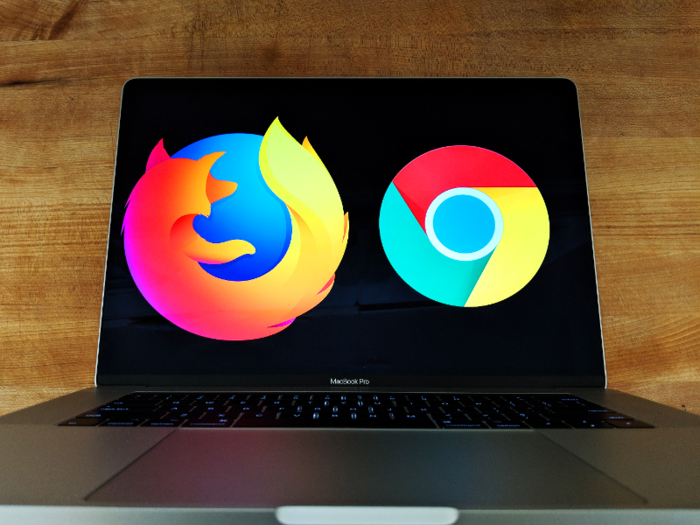


This step is important — the Guest Account is as close as you can get to having a brand-new Mac with nothing installed on it. It means that when you open up Chrome or Firefox, no other extensions or default homepages will load, meaning you get the "pure" experience. You'll need that for your testing purposes.
1. Click the Apple logo on the top left of your screen.
2. Click Log Out.
3. In the login screen, click Guest.


You can see how much RAM an app is using in the Activity Monitor app on macOS.
1. Press and hold the Command button, then press the space bar.
2. Type Activity Monitor, and press Enter.
3. Click the Memory tab towards the top.
4. Find Chrome. You might need to scroll down in Activity Monitor to find your browser. It should have Chrome's logo.
5. Click on Chrome in Activity Monitor.
While Activity Monitor does show you how much RAM an app like your web browser uses, it doesn't show you everything in a neat little package. Follow the next step to get that an overall look at how much RAM your browser is using.
6. Click the small "i" button towards the top left of Activity Monitor.
7. Note the number for "Real memory."


You can compare how much RAM each browser used running the same amount of tabs and websites. That should give you an idea of which browser is using more — or less — RAM.
In my case, Firefox is using significantly more "real" and "virtual" memory than Chrome does running the same 10 websites. I also tried this with 30 tabs, Firefox's "sweet spot," and found that it still used up more RAM than Chrome. But that may not be the case for you.

Windows 10 doesn't have a "guest" mode like macOS does, so you'll have to do something a little differently than Mac users.

In Google Chrome, click your account name on the top right, then click "Guest." A new guest account window will pop up. You'll need to close the other Chrome windows to get the purest form of Chrome.
This more pure Chrome won't have any of your extensions or preferences set, giving you a slightly more scientific baseline for your tests.


1. Press the Control, Alt, Delete buttons simultaneously and click Task Manager.
2. In the Task Manager window, find your browser and note the number in the Memory column.


Whatever browser has a higher number in the Memory column of Task Manager while running the same tabs and websites is more likely to slow down your computer.
On Windows, I found the same result as on macOS: Firefox uses more RAM than Chrome.
At least you know for sure which browser uses up more of your computer's RAM. If you find that your browser uses more RAM than the other, don't feel the need to switch. If you're comfortable with it, and it works for you most of the time, keep using it.
 I spent $2,000 for 7 nights in a 179-square-foot room on one of the world's largest cruise ships. Take a look inside my cabin.
I spent $2,000 for 7 nights in a 179-square-foot room on one of the world's largest cruise ships. Take a look inside my cabin. Saudi Arabia wants China to help fund its struggling $500 billion Neom megaproject. Investors may not be too excited.
Saudi Arabia wants China to help fund its struggling $500 billion Neom megaproject. Investors may not be too excited. Colon cancer rates are rising in young people. If you have two symptoms you should get a colonoscopy, a GI oncologist says.
Colon cancer rates are rising in young people. If you have two symptoms you should get a colonoscopy, a GI oncologist says. Experts warn of rising temperatures in Bengaluru as Phase 2 of Lok Sabha elections draws near
Experts warn of rising temperatures in Bengaluru as Phase 2 of Lok Sabha elections draws near
 Axis Bank posts net profit of ₹7,129 cr in March quarter
Axis Bank posts net profit of ₹7,129 cr in March quarter
 7 Best tourist places to visit in Rishikesh in 2024
7 Best tourist places to visit in Rishikesh in 2024

Copyright © 2024. Times Internet Limited. All rights reserved.For reprint rights. Times Syndication Service.